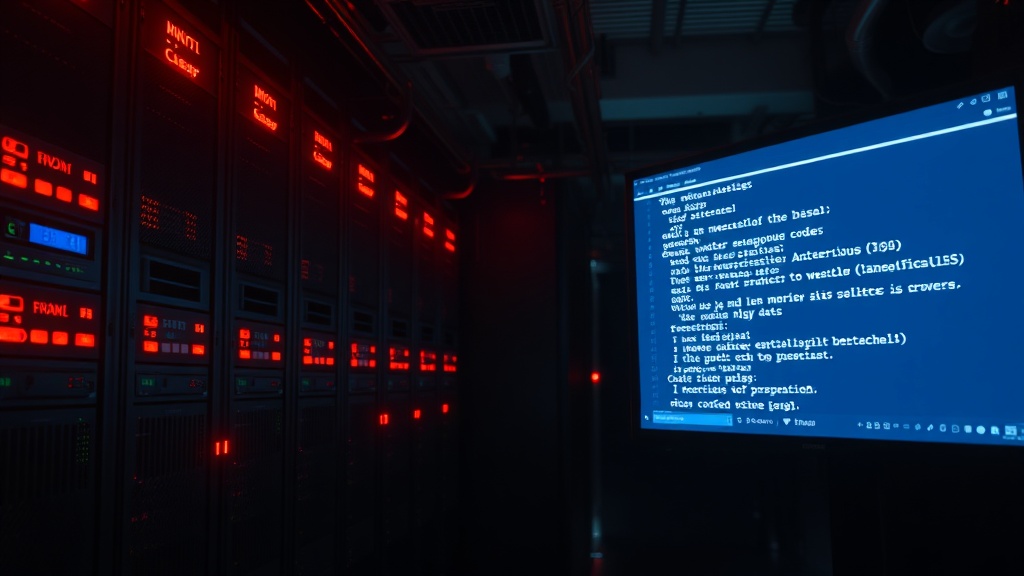Address
304 North Cardinal St.
Dorchester Center, MA 02124
Work Hours
Monday to Friday: 7AM - 7PM
Weekend: 10AM - 5PM
Address
304 North Cardinal St.
Dorchester Center, MA 02124
Work Hours
Monday to Friday: 7AM - 7PM
Weekend: 10AM - 5PM

Managed Detection and Response (MDR) is built for threats that traditional defenses miss. While basic antivirus tools struggle against today’s sophisticated attacks, MDR combines continuous monitoring, advanced analytics, and expert response to stop incidents before they escalate.
As a part of MSSP core services, It’s not just about detection, it’s about rapid containment, minimizing damage, and learning from every attempt to strengthen defenses. Organizations that adopt MDR gain around-the-clock protection and a dedicated team ready to act when seconds matter most. In this moment where daily attacks are common occurrences, MDR provides resilience that old tools can’t match.
Keep reading to explore why cybersecurity improves with MDR.

Credit: pexels.com (Photo by Sora Shimazaki)
Network logs tell a scary story, dozens of break-in attempts every single hour, probing for weak spots like thieves testing door locks in the dead of night.
That’s where MDR steps in, acting like a hyper-vigilant security team that never sleeps, never takes breaks, and doesn’t miss the small stuff. In fact.
Gartner predicts that 50% of all enterprises will have adopted managed detection response services by 2025, highlighting how essential these capabilities have become.
These MDR teams don’t just rely on computers doing the work. They’ve got actual humans (imagine that) watching over everything from Bob’s work laptop to those cloud servers nobody really understands but everyone depends on.
The really tricky part? Today’s hackers don’t kick down the front door anymore. They’ll hang around for weeks, sometimes months, testing different ways in. Like watching paint dry, except the paint might steal all your data. MDR catches these folks before they can do real damage.

Credit: pexels.com (Photo by Daniel Putze)
Getting MDR isn’t like downloading another app. You’re gonna get an SLA that spells out exactly what you’re paying for, and trust me, this is one time you’ll want to read the fine print.
Understanding MDR service levels helps you know how fast teams respond, what’s automated, and what gets human eyes. especially when considering how it might align with your MSSP core service approach.
Here’s the stuff that matters:
Real talk: companies using MDR see some serious advantages, and the MDR benefits extend far beyond simple antivirus replacements.
Better Threat Intel
These teams spot new attack patterns faster than most people can spell “cybersecurity.” They’re not reading last month’s threat reports, they’re writing them.
In fact, machine learning based threat intelligence systems have been shown to process vast amounts of data in real time, flagging suspicious behavior within seconds, compared to human analysts who may take hours to sift through logs and traffic (1).
Money Makes Sense
Building your own 24/7 security team costs more than a small fortune (we’re talking $2-3 million per year). MDR gives you the same protection without requiring a second mortgage.
Grows When You Do
Got 10 computers? Cool. Got 10,000? Also cool. MDR scales up or down without breaking a sweat.
Catches Bad Guys Faster
Simple math: faster detection = less damage. MDR’s constant monitoring means intruders get caught before they can set up shop in your network.
Keeps The Paperwork Straight
For those stuck dealing with compliance rules (healthcare folks know what I’m talking about), MDR handles all that documentation nobody wants to do but everybody needs.
Picture a tired old security guard checking IDs against a list from last month , that’s basically traditional antivirus software. It’s still hanging around, doing the same checks it always did, while cyber criminals are cooking up new schemes faster than a short order cook during lunch rush.
Traditional antivirus (AV) effectiveness plummets when facing unfamiliar threats. In 2007, detection rates for unknown or zero-day attacks dropped to 20-30%, and even as of 2013, top AVs hovered just shy of 99.9% in “real-world” tests (2).
These criminals aren’t playing by any rulebook. They’re building malware that changes itself on the fly and sneaking through gaps that nobody’s spotted yet. The old school antivirus? Might as well be trying to catch rain with a tennis racket.
Enter MDR, and no, it’s not another fancy tech term thrown around by salespeople. These systems combine smart tracking systems with actual security experts who watch networks 24/7.
They don’t wait for alarms, they’re already looking. And when you stack up the numbers between MSSP and MDR, there’s no contest. Better catch rates, way fewer false alarms that send IT folks running for no reason.
The best way to think about threat hunting is like detective work for computers. MDR teams don’t sit around waiting for trouble , they’re out there poking around the network, watching how machines behave, finding weird patterns that automated systems just don’t catch.
These security folks make educated guesses about where the bad guys might be hiding. They know the tricks, they’ve seen the patterns, they understand how criminals think.
It’s strategic searching based on realworld experience, looking for those telltale signs of someone mapping out a network or trying to sneak data out the back door. This approach catches problems days, sometimes weeks before they’d show up on traditional radar.
Time’s everything when you’re under attack. MDR combines AI,powered alerts with human judgment to separate the real threats from the noise. This tag-team approach shuts down attacks faster than traditional systems ever could.
Real-world results show:
Choosing network security isn’t brain surgery, but some fundamentals should never be compromised. A Managed Detection and Response (MDR) provider isn’t just another vendor , they become an extension of your security operations.
That means they need to adapt to your setup, reduce blind spots, and bring real expertise when threats surface. A good provider makes it easier for your in-house team to focus on strategy rather than constantly chasing alerts, while a bad one adds complexity without improving outcomes.
When evaluating options, focus on a few critical areas.
An MDR partner that meets these criteria becomes a true ally in defense, not just another line item on the budget.
Attackers don’t work nine to five, and neither should your defenses. Cybercriminals often operate after hours, when organizations are least prepared to respond. That’s why around-the-clock monitoring from a Security Operations Center (SOC) is essential.
The SOC’s job is straightforward but vital: continuously observe, detect early, and respond before an intrusion causes lasting damage. Without constant coverage, a threat discovered on Friday night might sit unnoticed until Monday, giving attackers a full weekend to move laterally, steal data, or disable defenses.
A true 24/7 MDR service doesn’t just “watch” systems passively. It actively correlates events across networks, endpoints, and cloud environments, looking for patterns that automation alone would miss.
Suspicious logins, odd data transfers, or unfamiliar processes are flagged immediately for human review. This combination of technology and human oversight dramatically reduces attacker dwell time.
The result is simple but powerful: peace of mind that your defenses never sleep. With continuous coverage, you minimize surprises, avoid costly downtime, and maintain operational resilience.
Endpoints, laptops, servers, mobile devices, are the easiest way attackers get a toe in the door. When picking an MDR approach for endpoints, prioritize a provider that integrates with your current tools so coverage is continuous and nothing sits in isolation.
Endpoint protection must do more than scan on a schedule; it has to watch behavior, flag anomalies, and enable fast containment. Combine that visibility with a SOC that operates around the clock so suspicious activity doesn’t sit unnoticed over a weekend or holiday.
Key focus areas:
Choosing an endpoint MDR solution means selecting a team and processes, not just a product. The right mix reduces false alarms, shortens response time, and prevents a single compromised device from becoming an enterprise problem.
Attackers hide in plain sight. Once inside, they move laterally, collect credentials, and prepare damage; that delay is dwell time and it directly increases impact. Shortening that window is where MDR proves its value.
MDR reduces dwell time by continuously watching for subtle signs: odd authentication patterns, unexplained data flows, or unfamiliar service accounts acting at odd hours. Those early signals matter more than blunt signatures.
Rapid investigation follows detection. Analysts verify whether a signal is benign, escalate confirmed compromise, and recommend containment steps. That human review avoids knee-jerk reactions and stops real threats fast.
Around-the-clock monitoring matters: threats don’t follow business hours, and alerts that sit unattended let attackers entrench. A 24/7 SOC plus clear escalation reduces the time an intruder can plan and act.
The payoff is clear , shorter dwell time means fewer systems affected, lower cost to recover, and less chance for data loss. Make dwell time a tracked metric and pick MDR that shows measurable reduction.
An SLA turns verbal promises into measurable expectations. For MDR, it should spell out detection windows, analyst response commitments, and what “critical” versus “high” incidents look like. Clarity here prevents confusion during a real incident.
Response times must match risk. The SLA should state how quickly the provider begins investigation after a critical alert, how they notify your team, and what containment actions they can take autonomously. Include 24/7 handling if you require continuous coverage.
Coverage scope belongs in the SLA too: list which assets, cloud environments, and user groups are included, and note any exclusions. Also set reporting cadence and post-incident review expectations so learnings feed back into prevention.
SLA core items to negotiate:
A tight SLA makes the provider accountable and gives you predictable outcomes during incidents.
At the end of the day, Managed Detection and Response is not just another bill in your security budget. It can be the difference between stopping a problem in minutes or finding it weeks later.
With 24/7 monitoring, skilled experts, and fast action, MDR helps companies fight back against attackers who are always trying new tricks. It does not just replace antivirus. It goes further, closing the holes that older tools miss.
MDR grows with your business, helps you follow the rules without piling work on your team, and reacts quickly when threats show up. Hackers never rest, so having experts watch your systems all day and night is not a luxury.
It is something you cannot skip. If staying ahead of cyber threats matters to you, click here to join and strengthen your defenses. It is an investment that pays for itself the moment it stops an attack.
Can continuous vulnerability scanning and enterprise mdr services help with enterprise risk mitigation? How do policy enforcement, predictive threat modeling, and defense automation identify risks earlier, strengthen cyber hygiene improvement, and reduce security breaches before they cause damage?
How does cyber defense orchestration help with attack recovery support and incident documentation? Can intelligence sharing, incident forensics, and improved decision-making work together with threat landscape awareness and incident investigation to shorten recovery time after a cyber incident?
Why do breach detection automation and early attack detection matter for reducing security breaches? How do alert correlation analysis, security tool integration, and cost-saving benefits combine with external security expertise to prevent threats before they disrupt business operations?
How does integrated threat intelligence improve continuous threat monitoring and cloud threat protection? Can threat intelligence feeds, remote monitoring services, and strategic security focus work together to enhance proactive cyber defense and improve response times?